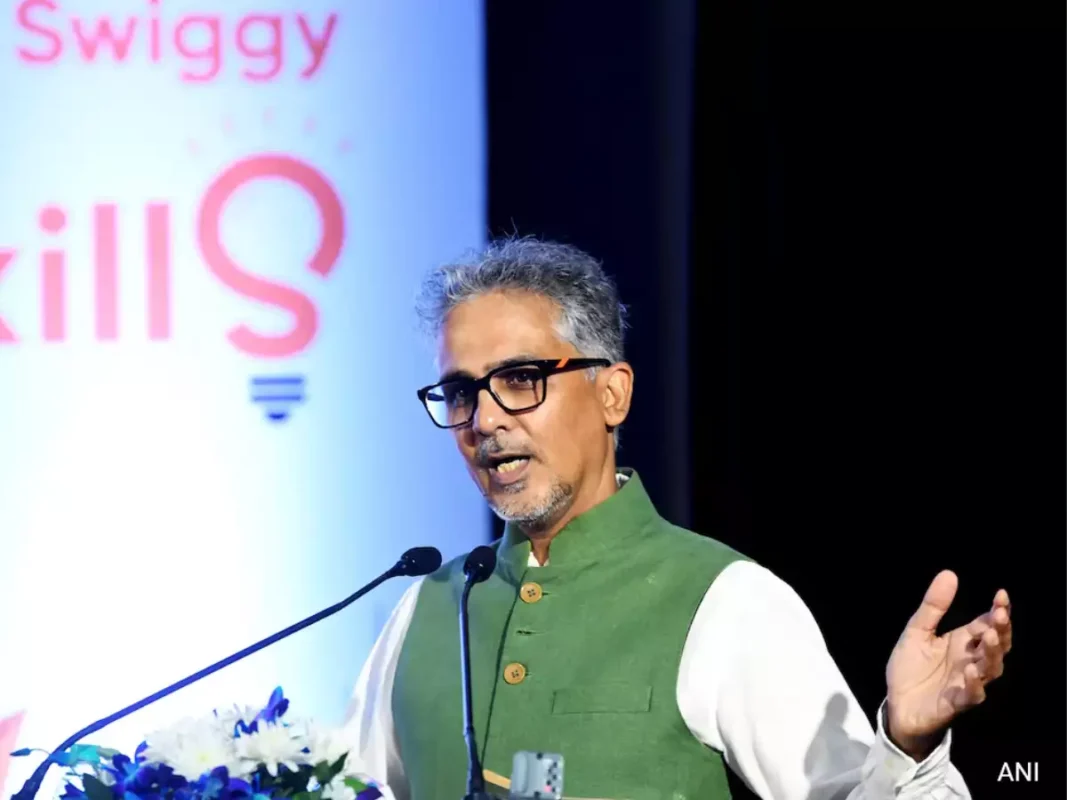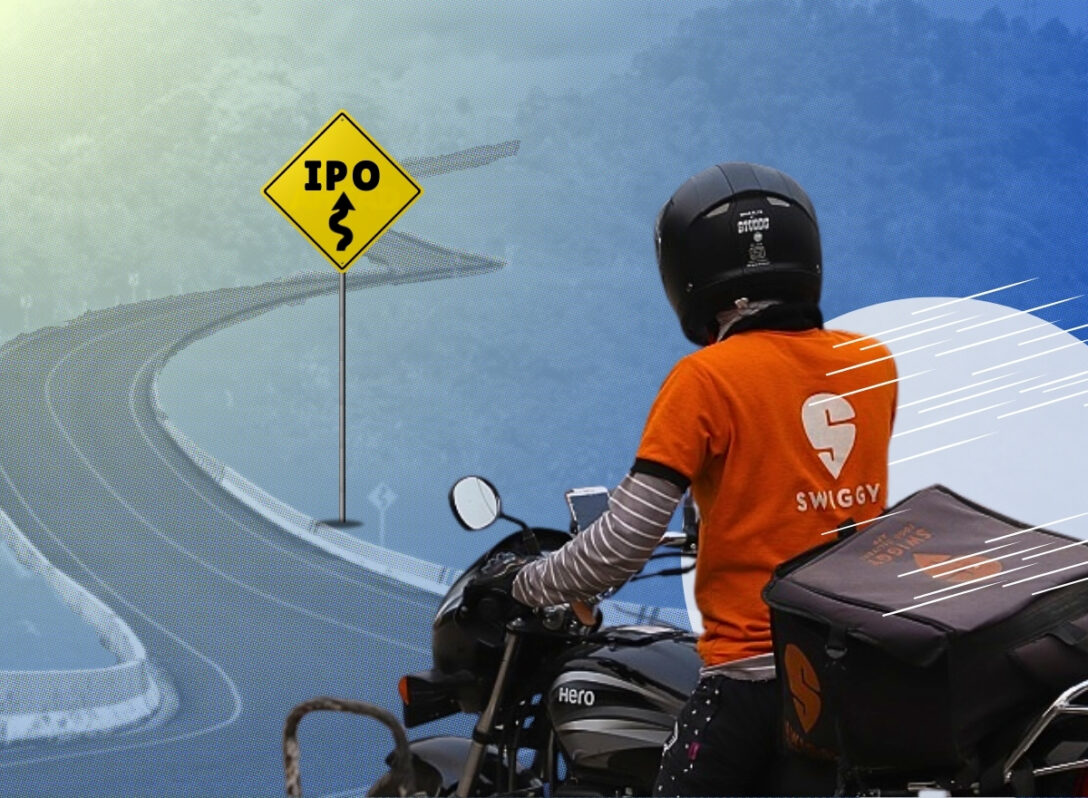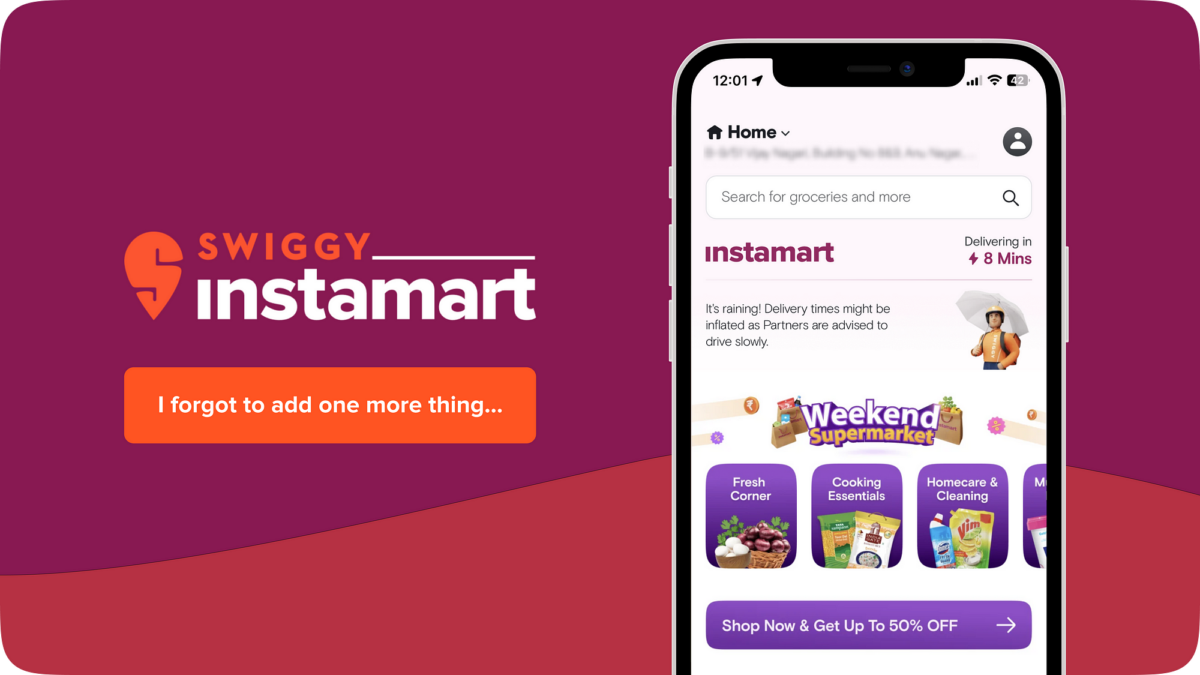Swiggy’s Bolt – A Risky Gamble Before Its IPO?
Swiggy has recently launched a new 10-minutes delivery service, this comes at a crucial time as Swiggy prepares for its IPO.

Swiggy – the food giant of the country has taken a big step to take on the Indian food delivery space by launching the fast delivery service called Bolt, promising to make meal deliveries within just ten minutes. This strategic launch happens at an even more critical moment for the company as it prepares to host its much-awaited IPO, raising questions on how this new service might influence investor sentiment and Swiggy’s valuation in the competitive quick commerce arena.
Bolt – Swiggy’s Risky Mission
Soon, big Indian cities will be covered by the Bolt service, Bangalore, Hyderabad, Mumbai, Chennai, Delhi, and Pune. This represents the first set of announcements made by the head of Swiggy’s Marketplace, Rohit Kapoor.
 Kapoor seems all charged up as he issues the challenge to customers to “choose your food in lesser time than it takes for us to deliver your food.”
Kapoor seems all charged up as he issues the challenge to customers to “choose your food in lesser time than it takes for us to deliver your food.”
In other words, Bolt is just another product in the plethora of innovative offerings that Swiggy is launching in the food delivery and quick commerce market before its public debut, however, the question remains: will this new service help Swiggy hold on as it inches closer to the IPO or will it be a high-stakes game of risk that will strain its resources and profitability?
The launch of Bolt also adds another layer of operational complexity and potential financial strain at this critical juncture. Couple that with Instamart and the core food delivery business of Swiggy is growing well, and it can make a huge difference in how the company storylines its IPO. Investor eyes will be on how all these pieces come together toward growth, operational efficiencies, and eventually profitability.
The Land of the IPO: Grand Plans Of Swiggy
 The impending IPO of Swiggy is creating tremors in the Indian startup ecosystem. The firm plans to raise fresh equity worth ₹3,750 crore and also an offer-for-sale of 185,286,265 equity shares by existing shareholders. The structure contemplates the liquidation of early investors’ capital simultaneously with fresh capital injected into the company for further growth in the future.
The impending IPO of Swiggy is creating tremors in the Indian startup ecosystem. The firm plans to raise fresh equity worth ₹3,750 crore and also an offer-for-sale of 185,286,265 equity shares by existing shareholders. The structure contemplates the liquidation of early investors’ capital simultaneously with fresh capital injected into the company for further growth in the future.
The IPO is structured to cater to all kinds of investor categories. QIBs (qualified institutional buyers), anchor investors, and mutual funds are part of the investor structure. Non-institutional buyers also have allocation avenues, broken down into a portion who are applying for ₹2 to ₹10 lakh and others who are bidding for more than ₹10 lakh. This diverse approach suggests that Swiggy intends to build a broad and stable base of investors.
Early Backers and Their Stakes
The IPO will include partial divestments of stakes by some of Swiggy’s early backers, including Accel, Prosus, and Tencent. That might fetch potentially handsome returns for those early investors in a situation that can highlight how much the company has grown since its very inception. Major shareholder SoftBank, however, has decided to retain its stake, probably trusting Swiggy’s long-term prospects or simply waiting for higher valuations later.
Other significant investors, such as Apoletto, Coatue, DST Euro Asia, Inspired Elite Investments, and Norwest, will also be selling pieces of their shares. Individual shareholders comprise co-founder Lakshmi Nandan Reddy Obul, Ramco Systems chairman P.R. Venketrama Raja, ex-co-founder Rahul Jaimini, non-executive director Samina Hamied, and co-founder Sriharsha Majety selling their shares via the offer-for-sale route.
How Will Swiggy Use The IPO Money?
IPO proceeds will help accelerate growth as well as innovation. Plans for the IPO proceeds Swiggy’s plans provide insight into strategic priorities and growth ambitions. Notably, the plans aim to commit ₹982 crore, or about 27% of the proceeds, toward network expansion of dark stores under subsidiary Scootsy Logistics Private Ltd. This is the largest investment that Swiggy is committing to its quick commerce arm, Swiggy Instamart, in pursuit of overall growth.
Swiggy had 581 dark stores as of June 30, 2024 with a footprint of 1,400 sq ft to 10,000 sq ft and an impressive average delivery time of 12.6 minutes across cities. Funding allocation for this network expansion suggests that quick commerce is an important battleground for future growth and market share for Swiggy.
Branding and promotion would account for another sizable chunk of the earnings, ₹929 crore. These indicate that Swiggy does recognize that acquisition and retention are essential in a highly competitive market. Marketing spend for FY24 came in at ₹558 crore, down by just about ₹3 crore compared to FY23, meaning this new capital could multiply its marketing efforts manyfold.
The remainder is spent on technological upgradation, cloud infrastructure, and other small company purchases, besides corporation purposes. Such wide utilization of funds warrants the entire plank of growth adopted by Swiggy that is operational expansion coupled with technological enhancement and strategic buys.
Financial Performance –
Swiggy’s performance remains mixed. It is a growth story, yet still works on a loss-making trajectory. Its loss was reduced to ₹2,350 crore at the end of FY24, down by 43%. This happened due to significant hikes in food delivery and quick commerce businesses. Revenue from operations rose 36% to ₹11,247 crore in the last fiscal.
 Order value of the consumer-facing business of the company is ₹35,000 crore on food delivery and Instamart. The 14.3 million monthly transacting users clearly indicate a strong market position of Swiggy and growing customer base.
Order value of the consumer-facing business of the company is ₹35,000 crore on food delivery and Instamart. The 14.3 million monthly transacting users clearly indicate a strong market position of Swiggy and growing customer base.
The way to profitability is still tough. While the revenue for Swiggy went up to ₹3,222 crore over ₹2,389 crore in the same quarter of last year, the company saw its expenses went up to ₹3,908 crore versus ₹3,073 crore during the same time period. It also led to deeper losses of ₹611 crore compared to ₹564 crore incurred during the same period last year. These numbers only show the challenges of balancing growth and profitability in a competitive and expensive food delivery and quick-commerce space.
The Quick Commerce Puzzle – Opportunity or Obstacle
Swiggy has seen a promising result of its heavy investment in the quick commerce segment through Instamart. The unit now manages to rake in ₹374 crore in revenue, an increase of 108% year on year, thanks to augmented merchant partner commissions, advertising revenue, and fees from users and delivery partners. Gross order value jumped up to ₹2,724 crores; the average order value rose to ₹487, from ₹441 earlier.
However, the quick commerce space is cutthroat. Swiggy’s quick commerce segment, for example, has reached a gross merchandise value of around $2.8 billion in 2023, as seen in Redseer. BlinkIt and Zepto together hold around 60-65 percent of the market of quick commerce.
This would see Instamart put up ₹1,100 crore in gross revenue, while the market leader BlinkIt would be posting at ₹2,301 crore. Instamart’s gross order value for the year would have been ₹8,100 crore, against BlinkIt’s ₹12,469 crore. These numbers reveal intense competition in the space and the mandatory huge investments that the Swiggy needs to make to gain market share.
The Bolt Factor: Implication To The IPO Prospects
Having launched Bolt, Swiggy’s 10-minute food delivery service, one can somehow think of this as a strategic differentiation move in crowded markets and it may boost its valuation ahead of an impending IPO. In this manner, Swiggy is promising ultra-fast delivery times to meet changing consumer expectations and has thus gotten on an early lead as the innovator.
However, the Bolt effect on the IPO prospect of Swiggy does not come so easily.
It can either make the service more attractive to investors since it shows that Swiggy is still on the innovation bandwagon and its capacity to understand current market requirements. Buzz about such a service may be translated into an increase in engagement of the users and order volumes, which could nudge investor sentiment in a positive direction.
Or the concept of providing delivery within 10 minutes would be associated with significant operational challenges along with probable cost implications. Achieving homogeneous delivery in such short time periods would require huge investments in logistics, technology, and human resources. This might put pressure on Swiggy’s already over-extended profitability and may attract fewer investors to the table.
Of course, success will also depend on how well the entity scales and can execute the service. While it was initially launched in a few cities only, the proof of the pudding will lie in Swiggy’s ability to maintain the quality of service and profitability as it expands to more regions. In this regard, investors would like to look for early performance metrics on Bolt and its implications on overall operational efficiency and customer satisfaction.
Competition and Market Position –
Swiggy is going public at a time when the food delivery and quick commerce markets in India are fiercely competitive. The biggest competitor for the company, Zomato had gone public earlier, and its shares had risen around 125% in 2023, at ₹280.15 as of October 5, 2024. With Zomato having acquired Blinkit, the quick commerce space has only gotten hotter.
 Aggressively expanding its quick-commerce operations, other players such as Zepto and Tata’s BigBasket have also joined the fray. Even the likes of Flipkart are now entering the fray as there is a massive consumer appetite for instant deliveries of various products.
Aggressively expanding its quick-commerce operations, other players such as Zepto and Tata’s BigBasket have also joined the fray. Even the likes of Flipkart are now entering the fray as there is a massive consumer appetite for instant deliveries of various products.
Against this backdrop, Bolt’s launch by Swiggy and further investments in Instamart are defensive measures that protect and enhance market share. Such strategic moves may be matters of survival for Swiggy in maintaining competitive advantage so that the IPO valuation flag that has been set at $10 billion is justified.
Investor Interest and Valuation Expectations –
This Indian food delivery and ordering company’s road to its coveted IPO has been ridden with tremendous investor interest. It has gathered almost $3.62 billion in funding through 15 rounds of investment, supported by over 50 institutional investors and some angel investors. Its last major round of funding in 2022 led by Invesco saw the valuation double to $10 billion.
It is interesting to note that the IPO has garnered Bollywood celebrities and sports stars, including Madhuri Dixit’s family office, Sidharth Malhotra, Amitabh Bachchan, Rahul Dravid, Zaheer Khan, Rohan Bopanna, and filmmaker Karan Johar. Celebrity appeal adds another interesting dimension to Swiggy’s public profile and could influence retail investor interest.
However, how that valuation will sustain or overcome in the current market conditions remains the key question. Initiatives like Bolt and Instamart’s sustained growth and momentum would most likely dictate investor perception and also act as the deadline for the IPO’s success.
A Make-or-Break Moment for Swiggy –
While this 10-minute delivery service is a thrilling promise by Swiggy, its result will be reaped only in the context of an IPO with successful execution, scalability, and the impact on the financial health of the company. Innovation needs to be balanced with fiscal prudence as Swiggy goes through this critical juncture in a manner that wins over investor confidence and makes its entry into the public market.
It is going to be an end wherein the storyline of Swiggy’s IPO is defined less by the boldest moves like Bolt but more by a clear path towards sustainable growth and profitability in a hyper-competitive and dynamically changing Indian food delivery and quick commerce landscape. As the date for the IPO draws near, we would be waiting to see if Swiggy can do the impossible task of delivering not just food but returns for the investors too at the speed of Bolt.




